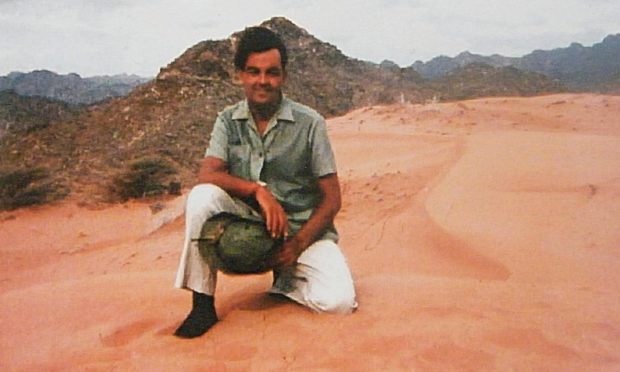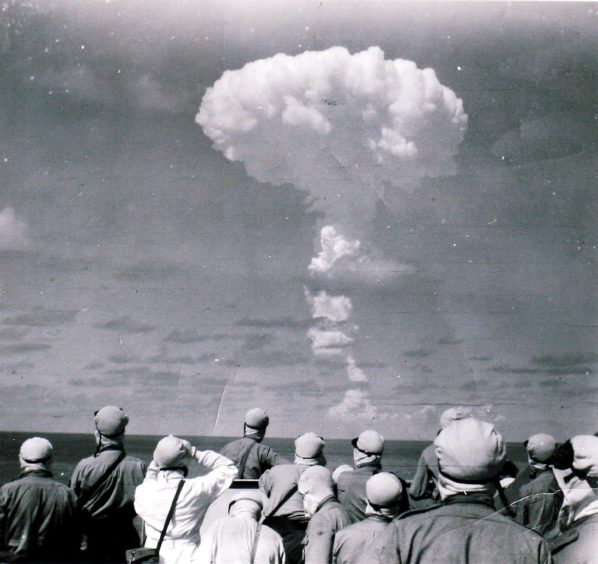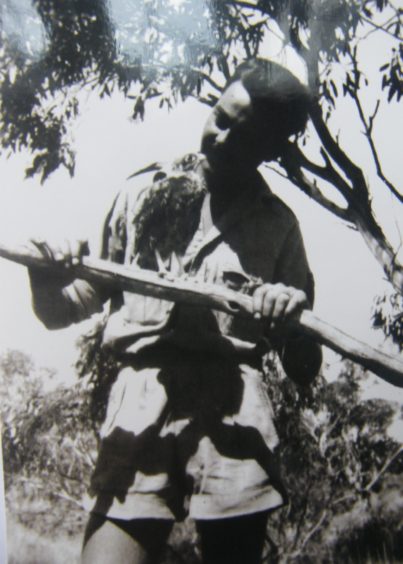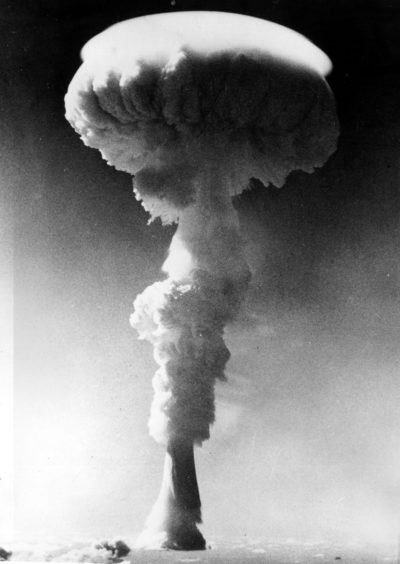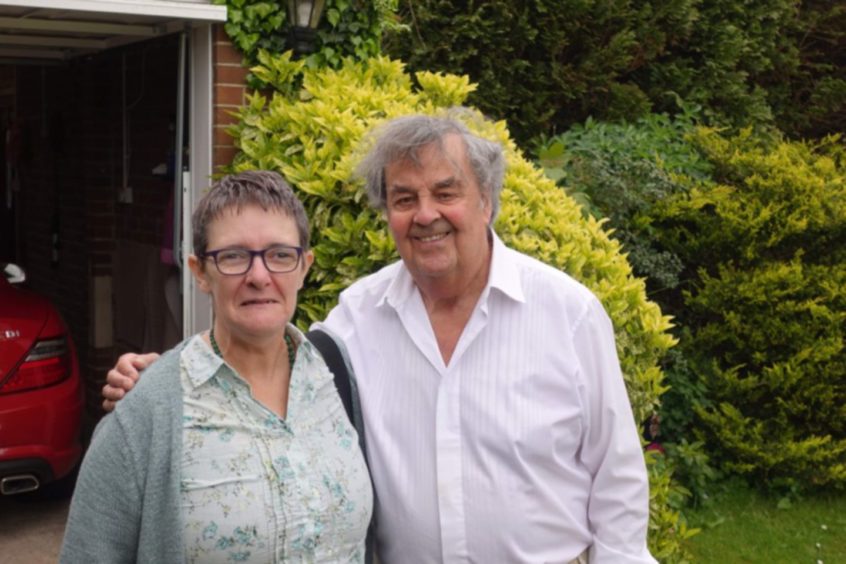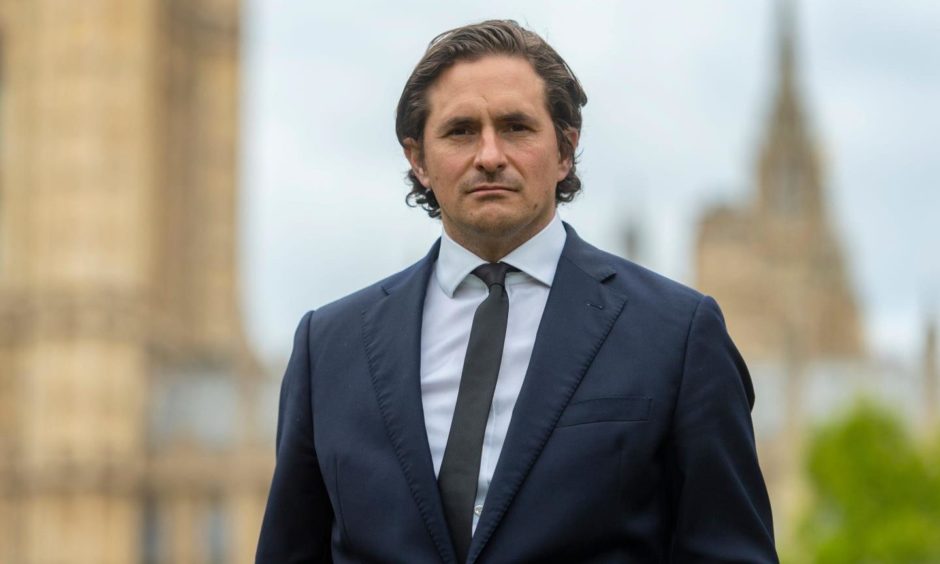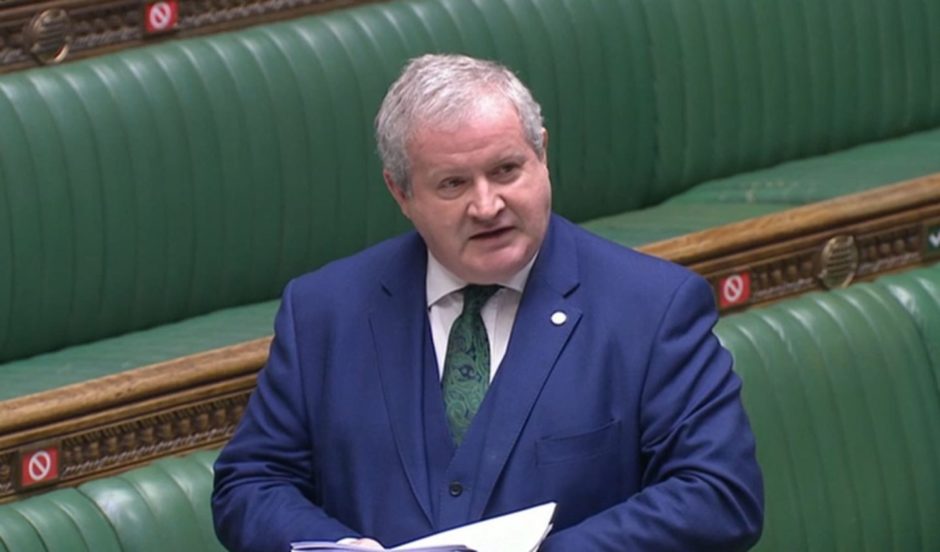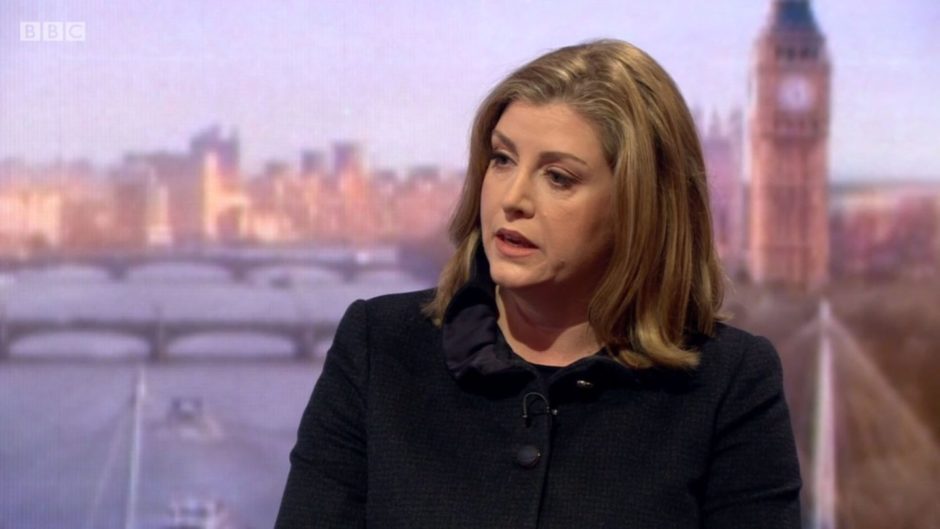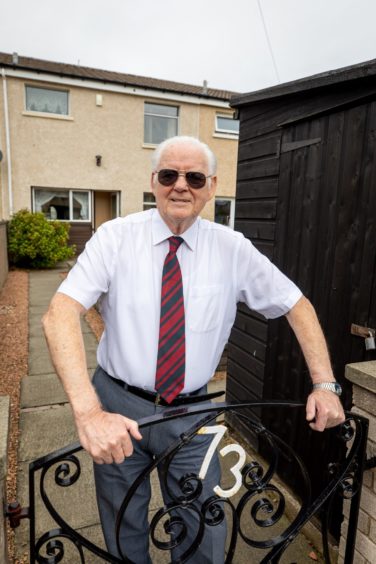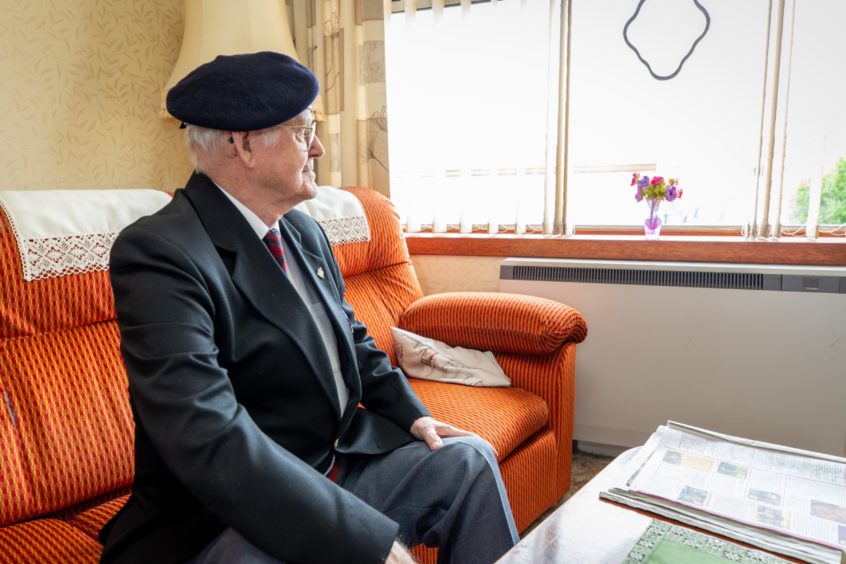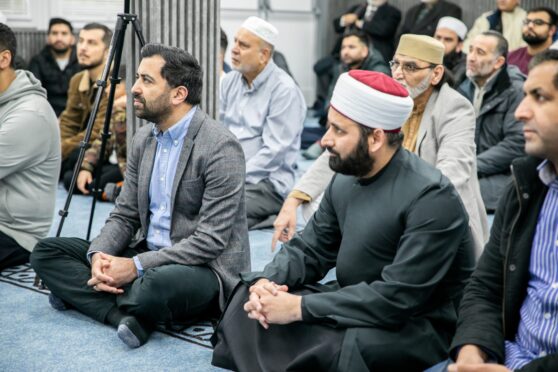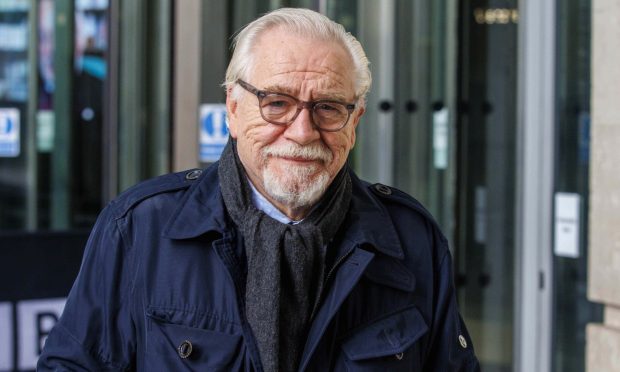A veterans’ charity is making a fresh bid for medallic recognition for Britain’s nuclear test heroes, six months after the last application was rejected.
The British Nuclear Test Veterans Association (BNTVA) submitted the 90-page medal application to the UK government on June 8.
The document contains compelling case studies, including that of John Folkes from Ramsgate, an aircraft technician with the RAF, who was just 19 years old when he was tasked with flying through the mushroom clouds to collect radioactive samples.
On one mission the blast flipped his plane over, the intense heat stripping the paintwork.
The BNTVA’s medal application is being supported by former veterans’ minister and Conservative MP Johnny Mercer and SNP MP Ian Blackford.
22,000 veterans
Around 22,000 British servicemen, including Fife man Dave Whyte, witnessed nuclear tests on mainland Australia, the Montebello Islands off Western Australia and Christmas Island in the South Pacific, during the 1950s and 1960s.
Many went on to suffer health problems, including rare cancers, infertility, musculoskeletal issues and digestive problems.
Ill health and a higher rate of birth defects has also been observed in veterans’ descendants, attributed to the bomb tests.
Britain’s nuclear test programme began with Operation Hurricane.
On October 3 1952 Britain detonated its first atomic bomb inside HMS Plym, which saw the UK join America and Russia as the third nuclear power.
To qualify for a medal, it must be proved that servicemen demonstrated ‘risk and rigour’.
RAF cloud sampler John Folkes
John Folkes was one of a number of RAF cloud samplers, brave men who carried out an extremely risky and rigorous job by taking readings from the air of radioactive fallout, generally just after the bombs were detonated.
Depending on the sortie, they flew next to the mushroom cloud or through the cloud to take the readings, exposing themselves to high levels of radiation.
Often the Government scientists leading the tests did not record these levels correctly, if at all.
John was just 19 years old when he was sent to Operation Buffalo, Maralinga, in 1956, where he witnessed seven nuclear tests.
He was ordered to fly through the bomb cloud and collect samples.
He said the aircraft leaked, allowing in radioactive particles, and was never decontaminated between missions.
On one particular mission, John and his crew were ordered to fly towards the mushroom cloud.
The nuclear blast flipped the aircraft upside down, the heat stripping the paintwork.
John recalls: “From my position I well remember seeing on the primary instrument panel some of the gauges and flying instruments, fluctuating and registering readings off their normal scale.
“At a distance which is difficult to judge but uncomfortably close, looking down I was to witness the menacing sight of a turbulent inferno mixed with a crimson and blackened thick cloud of billowing smoke rapidly climbing towards us.
“Still climbing to rendezvous with our objective, we encountered the shock wave, which in an instant flipped the aircraft onto its back.
“This scenario was immensely dangerous and full of both risk and rigour for the flight crew.”
He adds: “We owe our lives to the reassuring pilot whose skill maintained control. We were pushed to our physical and psychological limits, judgement and skill during this flight.”
Mental strain and ‘shell shock’
The episode left John experiencing mental strain and he developed a hand tremor, likened to ‘shell shock’, which remains with him to this day.
When he returned home, he was ordered to keep quiet about what he had witnessed under the Official Secrets Act.
Many nuclear test participants were still teenagers at the time of the nuclear tests, with thousands having been conscripted into National Service.
They, along with their colleagues, had been volunteered to attend the nuclear tests, rather than volunteer themselves.
Although the British nuclear test participants did not take part in combat-related service, they spent long periods of time away from home working in difficult and arduous conditions.
Shark-infested waters, giant crabs, monsoons, coral poisoning and heat conditions all posed a risk. One serviceman died of sunstroke after falling asleep under a coconut tree and was buried at sea as the land was too inhospitable to bury him.
Cross-party political support
The BNTVA’s latest medal application has cross-party political support.
Former Veterans Minister Johnny Mercer, Conservative MP for Plymouth Moor View, says: “I firmly believe that these British nuclear test participants have met both the risk and rigour involved to satisfy the committee in the award of medal.
“The men have lived, and thousands have died after the British nuclear testing and radiation clean-ups from 1952-1967.
“The testimony from John Folkes is particularly moving – seeing a young aircraft technician perform multiple sorties as a cloud flyer through the radioactive fallout. His role significantly went beyond normal duties and deserves recognition.”
He adds: “The narratives and documentary evidence show that the personnel involved encountered both risk and rigour which exceeded their normal duties during Britain’s nuclear testing.”
Ian Blackford, leader of SNP Westminster Parliamentary Group, is also backing the BNTVA’s medal application.
The MP for Ross, Skye and Lochaber says: “It is a huge injustice that these veterans have never been properly recognised by the UK government after the suffering they and their families have endured.”
He adds: “I hope nuclear test veterans are at long last properly recognised and thanked for the service and sacrifice they have given.”
Penny Mordaunt, Conservative MP for Portsmouth North, is also backing the application.
The BNTVA’s medal application argues that as well as physical injury, the servicemen also sustained ‘moral injury’.
Moral injury occurs when a person witnesses a distressing event which betrays their core values and individual belief system.
It impacts their psychological, behavioural, social and sometimes spiritual aftermath of exposure to traumatic or unusually stressful circumstances.
Ceri McDade, chair of the British Nuclear Test Veteran’s Association, says: “It is important that the BNTVA, as the UK charity for British nuclear test veterans and their families, submits this emotive and detailed medal application to the Advisory Military Sub-Committee.
“The 90-page submission contains documentary evidence and testimonies from the veterans, explicitly setting out the risk and rigour they endured during the atomic and nuclear testing and clean-ups from 1952-1967.
“The transgressive act of participating in the nuclear tests was way beyond their call of duty, and has exacerbated feelings of guilt, shame, injustice and anger ever since.
“We hope that this application will be a step towards proper recognition of the participants individually.”
Fife veteran Dave Whyte
The Courier has been highlighting the case of Christmas Island veteran Dave Whyte, from Kirkcaldy, who has been campaigning for years for “justice” for test veterans.
He told how his latest correspondence has been described as “vexatious” by the Ministry of Defence.
The MOD says it has exhausted all avenues with Mr Whyte in terms of correspondence.
A UK Government spokesperson said: “We are grateful to all those who participated in the British nuclear testing programme, which played a valuable role towards developing a nuclear deterrent that has ultimately kept Britain safe for decades.
“While it falls outside the criteria for medallic recognition, this in no way diminishes the contribution of those service personnel who witnessed the UK’s nuclear tests.”
